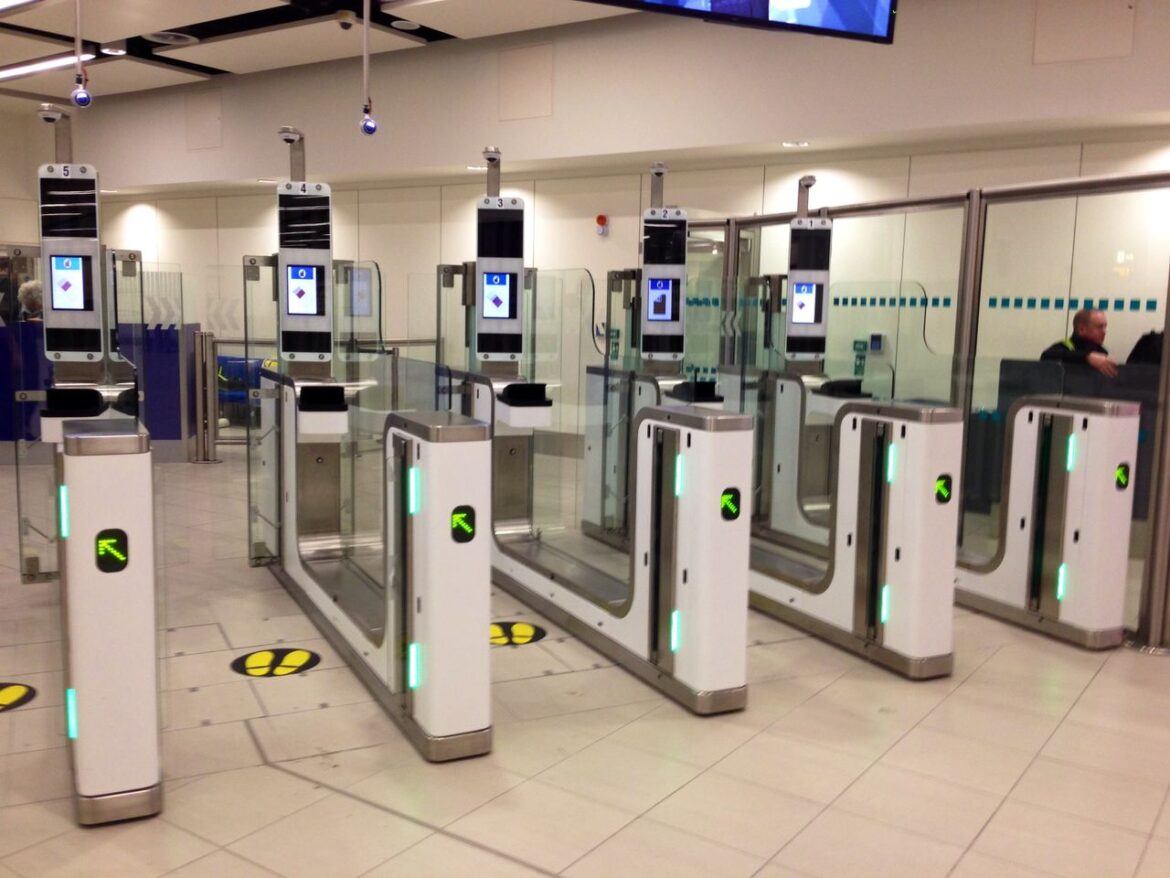For decades, travelling from the UK to Europe was as simple as presenting your passport and breezing through border control. However, since Brexit, the rules have shifted significantly, and one of the most notable developments for frequent flyers and holidaymakers is the introduction of UK Travellers Europe E-Gates. These automated border systems promise faster processing times, but they also come with new rules, eligibility criteria, and some important changes that every traveller should know before heading to the continent.
In this guide, we’ll break down everything you need to know about UK Travellers Europe E-Gates — from how they work to who can use them, and what the future holds for post-Brexit travel.
Table of Contents
What Are UK Travellers Europe E-Gates?
E-Gates, also known as automated border control gates, use biometric technology to verify a traveller’s identity against stored passport data. Instead of having your documents checked manually by a border officer, you simply scan your passport, have your photo taken by a camera, and the system confirms your identity in seconds.
The EU has rolled out Europe E-Gates in many major airports and ferry terminals to speed up the entry process for eligible travellers, and now, UK citizens can benefit from this system under certain conditions — a significant shift since the post-Brexit changes in border control.
Why E-Gates Are Important for UK Travellers
Since Brexit, UK passport holders are treated as third-country nationals in the EU, meaning they are no longer part of the freedom-of-movement arrangement. This has led to longer queues at popular entry points such as Spain, France, and Portugal, particularly during the busy summer season.
The introduction of UK Travellers Europe E-Gates aims to reduce waiting times and make border control more efficient. While the rules vary from country to country, more European nations are now enabling UK passport holders to use these gates — a welcome change for frequent business travellers, holidaymakers, and expats.
Where Can UK Travellers Use Europe E-Gates?
Not all EU countries have opened their automated gates to UK citizens, but the list is growing. Some of the most popular destinations that currently allow UK Travellers Europe E-Gates access include:
- Spain – Available at major airports such as Madrid, Barcelona, and Málaga.
- Portugal – Lisbon and Faro airports have E-Gates for eligible non-EU travellers.
- France – Paris Charles de Gaulle and Orly are testing broader access.
- Italy – Rome Fiumicino and Milan Malpensa airports have expanded E-Gate usage.
- Netherlands – Amsterdam Schiphol allows some non-EU travellers to use E-Gates.
Travellers should always check the latest information for their destination before departure, as access rules can change without much notice.
How UK Travellers Europe E-Gates Work
Using an E-Gate is straightforward and takes only a few seconds:
- Approach the E-Gate – Look for the signage indicating non-EU or all-passport access.
- Scan Your Passport – Place the photo page face down on the scanner.
- Stand for the Camera – The gate’s facial recognition system will match your face to the passport image.
- Wait for the Green Light – Once verified, the gates open, and you’re free to enter.
This process can save minutes or even hours compared to manual checks during peak travel periods.
Who Can Use UK Travellers Europe E-Gates?
Eligibility for UK Travellers Europe E-Gates varies depending on the country. Generally, you must:
- Be aged 12 or over (age limits differ slightly between nations)
- Hold a biometric passport (the one with the microchip symbol)
- Be visiting for short stays (typically up to 90 days in a 180-day period)
- Not require a visa for entry
Some destinations also require travellers to have previously visited the EU or to be enrolled in certain pre-clearance programs.
The ETIAS Impact
From 2025 onwards, the European Travel Information and Authorisation System (ETIAS) will be a requirement for UK passport holders visiting most EU countries. While this doesn’t replace the UK Travellers Europe E-Gates process, it works alongside it — meaning you will need ETIAS pre-approval before using automated gates.
Tips for Smoother E-Gate Travel
To make the most of UK Travellers Europe E-Gates, follow these tips:
- Check Your Passport Validity – It must be valid for at least 3 months after your intended departure date from the EU.
- Remove Sunglasses and Hats – Facial recognition needs a clear view of your face.
- Have ETIAS Ready (From 2025) – Without it, you’ll be directed to manual checks.
- Know the Rules for Your Destination – Not all airports have E-Gates open to UK citizens.
The Future of UK Travellers Europe E-Gates
With rising travel demand, more European countries are investing in biometric border technology. Industry experts predict that by 2030, the majority of EU entry points will allow UK Travellers Europe E-Gates access, reducing congestion and improving the travel experience.
For now, travellers should stay updated on which destinations allow E-Gate use and be prepared for occasional manual checks — particularly at smaller airports and land borders.
Final Thoughts
The post-Brexit travel landscape has changed dramatically for UK citizens, but the expansion of UK Travellers Europe E-Gates is a welcome development. These systems save time, reduce stress, and make crossing into Europe smoother than ever. By understanding where and how you can use them, you can spend less time queuing at border control and more time enjoying your trip.
If you’re planning European travel soon, check the latest entry requirements, pack your biometric passport, and take advantage of the growing network of UK Travellers Europe E-Gates across the continent.










